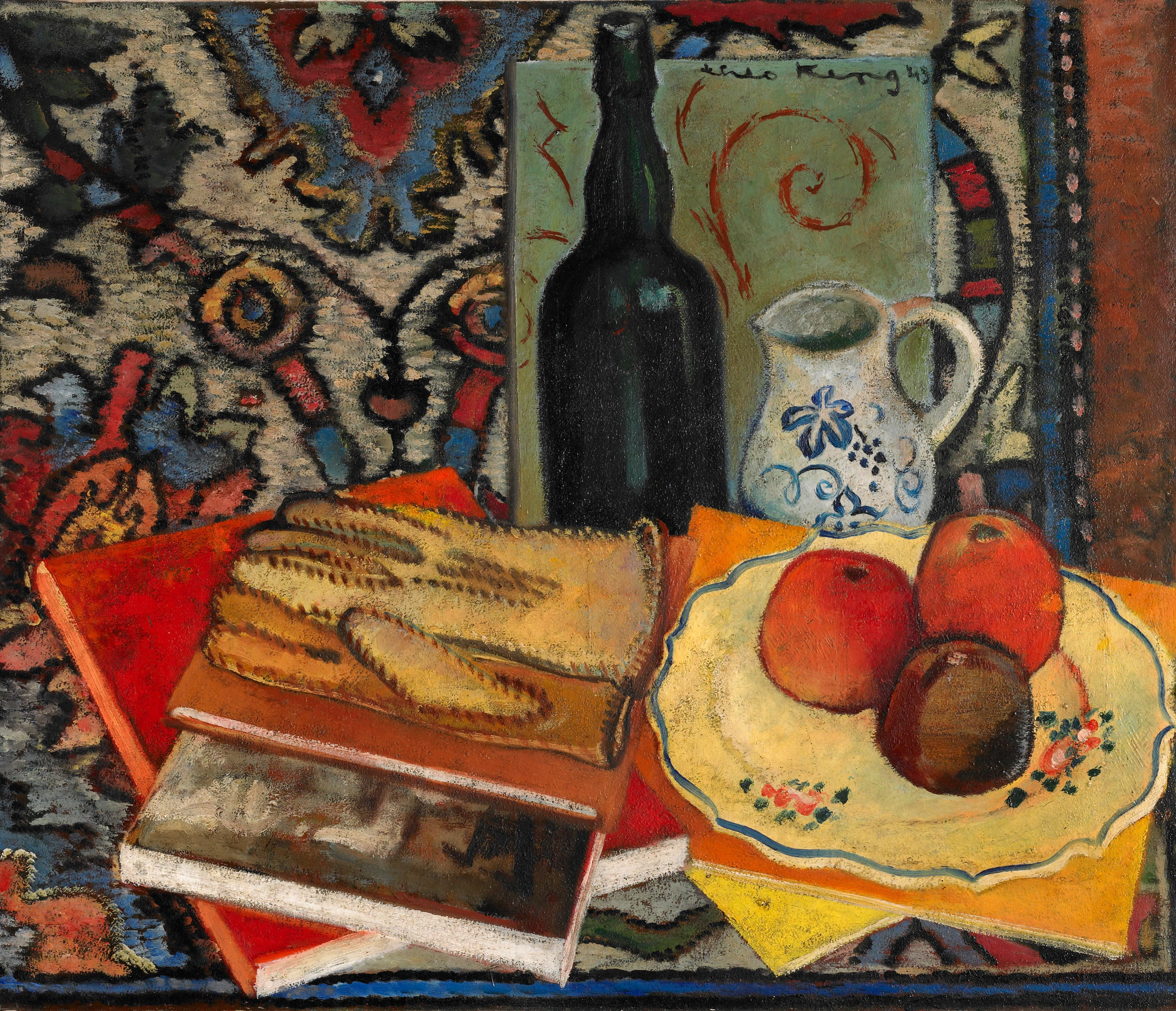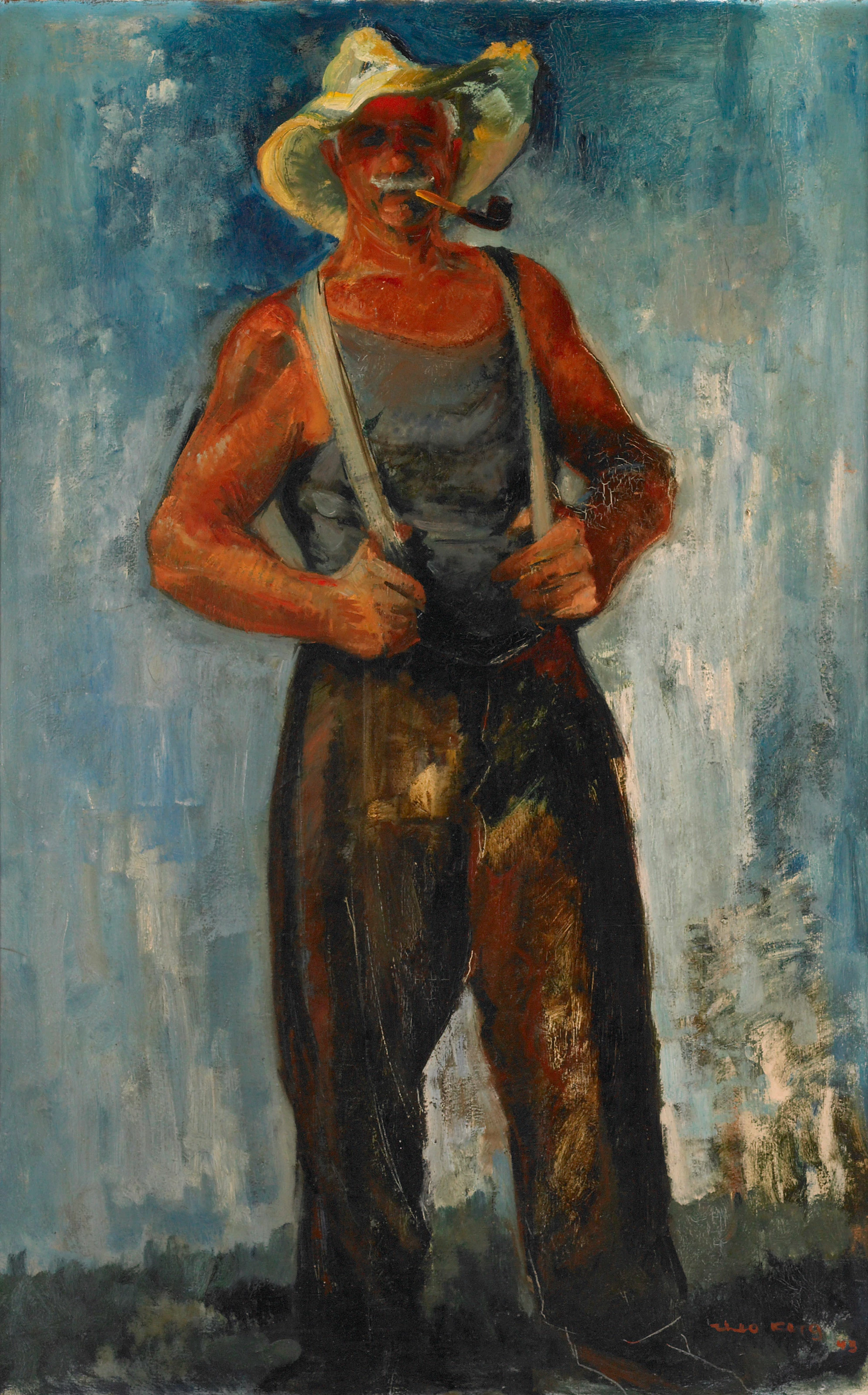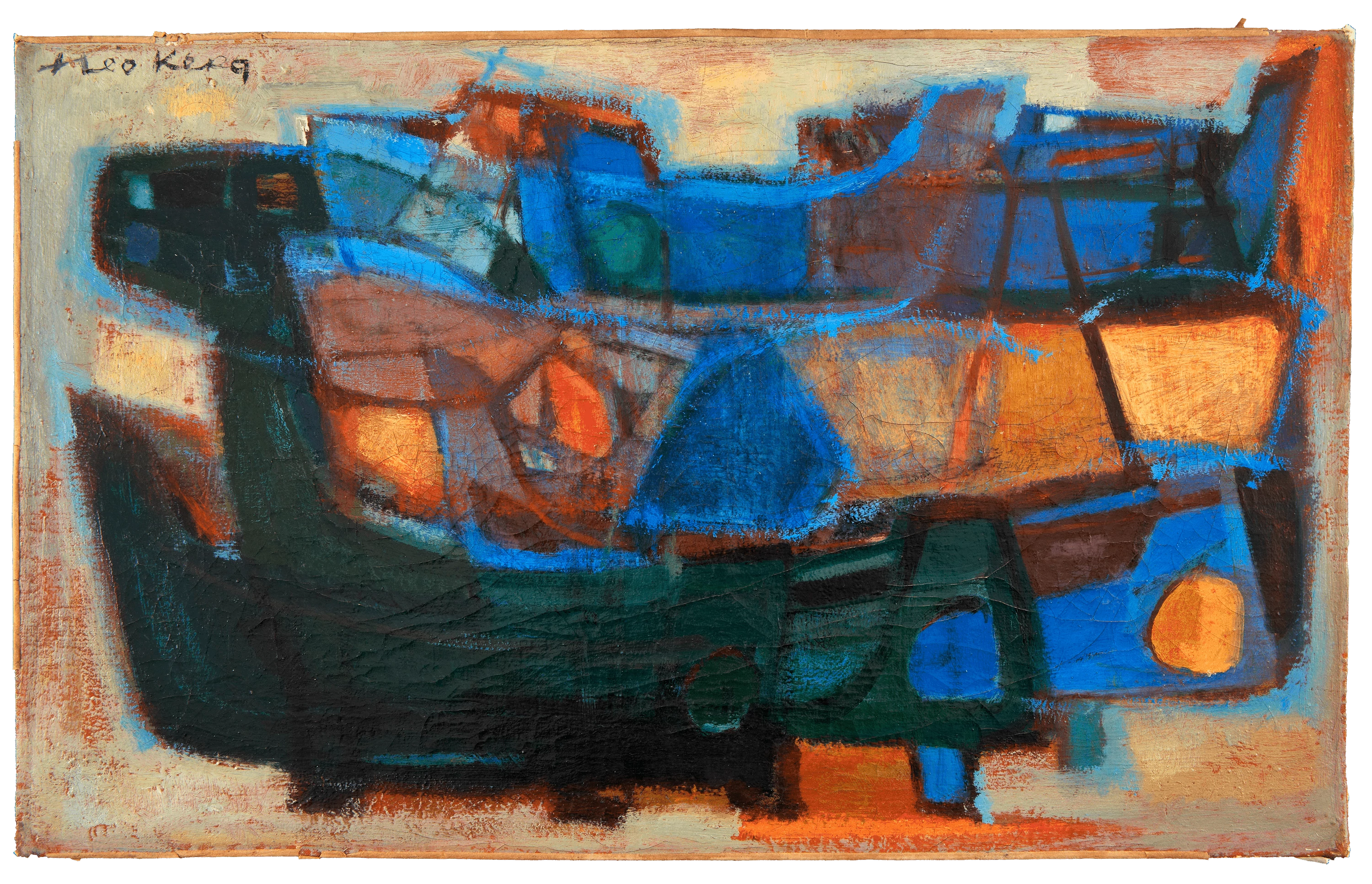Esch-sur-Alzette is the second-largest city of the European country of Luxembourg, yet its population would barely fill a modestly large sports stadium. Théo Kerg was born into this small city in 1909, as generations of farming were being thrown off in favor of a new, thriving steel industry—an energetic place to grow up. While young Théo moved to Paris to study at the École nationale supérieure des Beaux-Arts when he turned twenty, his furiously productive art practice was scarcely Parisian in its pace. For the next 50 years Théo made art with the intensity of a blast furnace.
Like many artists working in the early 1900s, Théo Kerg’s work evolved quickly. In 1932 Théo moved to Düsseldorf, Germany, to study under Paul Klee at the Kunstakademie. Klee’s influence is clear in Théo’s muted abstraction in pieces like Abstract Composition, and Spiral Tangent Curve. After 1934 Théo moved back to Luxembourg, where he worked in advertising and returned to school, eventually graduating and becoming a professor of art education. The 1940s saw another evolution of Théo’s style, this time a forced change. Abstract art was deemed degenerate by the Nazi party, who occupied Luxembourg in 1940, and Théo felt pressured to change his subject matter to more ‘appropriate’ topics. His landscapes and portraits from this period are beautiful, but somber. Many, like View of the Corniche Road, are downright haunting.
Théo Kerg’s early work played it safe, but his patience ran out on September 6th, 1942. After a student protest, Théo wrote a letter to the Chief of Civil Administration, condemning the behavior of his German director. This act of civil defiance put Théo on a list of academics who were to be deported to Germany, where they could be more carefully observed and controlled. Théo resigned from his teaching position in hopes of evading deportation, but was arrested on September 14, 1944 and held illegally and without judgment for 15 months. In January of 1946 he was transferred to a work camp in northern Luxembourg, still without a formal hearing or charge. Finally, in September of 1946 Théo acquired a new passport and slipped out of the country, returning to Paris, permanently.
With WWII finally at a close, and the Paris Peace Treaties signed in 1947, Théo Kerg was free to pursue art as he saw fit. His output was tremendous and diverse. Théo published a series of 40 lithographs of city scenes from the Swiss cities of Bern, Basel, Friborg and of Notre Dame in Paris. He taught painting at the Louvre, and has two solo shows of oil paintings in the Bellechasse Gallery of Paris. These golden years saw a brighter, more colorful abstraction from Théo. Works like At the Solferino-Paris bridge and Morning are cheery and hopeful, and won him placement in shows alongside Marc Chagall, Matisse, and Picasso, and in 1955, the “A Friend of Artists” Award from the National Society of Fine Arts.
But Théo Kerg had one last evolution developing—he called it tactilism.
It often takes artists decades to find their unique voice. For Théo Kerg that style began to appear in the early 1960s, when his paintings began to eat his canvases. At first his paintings started to grow protrusions, carved into words, or shapes that resembled words. These thick slabs consumed the canvas, becoming less a painting, and more a surface. Words were then replaced with cryptic symbols, arrows and jagged hieroglyphs. By the 1970s works like The Echo of Silence, or his untitled yellow artwork have devoured the canvas entirely, growing into new shapes, stretching and pulsing with discomforting sentience. Théo called these living objects tactile art—their appearance changing based on where you look at them from, how they're lit, and how you approach them.
By the end of his life Théo Kerg participated in 300 group exhibitions and over 150 individual exhibitions, a truly astonishing volume of work, and his final, tactile style appears like it might still be evolving.
...
Got questions, comments or corrections about Théo Kerg? Join the conversation in our Discord, and if you enjoy content like this, consider becoming a member for exclusive essays, downloadables, and discounts in the Obelisk Store.










